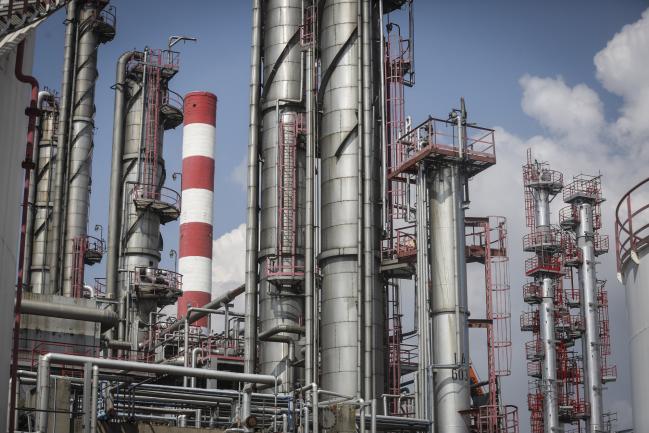(Bloomberg) -- On the eve of oil talks between President Vladimir Putin and Saudi Crown Prince Mohammed Bin Salman, Russian crude producers are showing why their leader can afford to drive a hard bargain.
The most recent financial data from companies including Rosneft PJSC and Lukoil PJSC show an industry that has little to fear from oil’s plunge back into a bear market. Thanks to low production costs, plus the natural hedge of falling taxes and a weakening ruble if prices drop further, they could withstand years of cheap crude, according to analysts from Citigroup Inc (NYSE:C). to Renaissance Capital.
“Russian crude producers will feel comfortable in the $50 to $60 per barrel band,” said Dmitry Marinchenko, oil and gas director at Fitch Ratings. The estimates echo comments from Putin, who said Wednesday that oil at $60 is “absolutely fine” for his nation.
The resilience could make Russia a tough negotiator as Saudi Arabia, the de-facto OPEC leader, suggests coordinated output cuts to boost prices.
In the first nine month of this year, Rosneft, Lukoil and Gazprom (MCX:GAZP) Neft PJSC -- Russia’s largest producers -- spent no more than $48.50 to produce and export a barrel of oil, according to Bloomberg calculations based on the companies’ financial reports. Even after a 30 percent plunge Brent crude, the international benchmark, is currently trading near $60 a barrel.
Costs at the wellhead reached just $3 to $4 a barrel, one of the lowest levels in the world, with taxes accounting for the rest. Shipments from West Siberia, the nation’s main oil province, to the nation’s borders cost an extra $4 to $5 a barrel, Citigroup estimates.
While these costs would seem to indicate that crude prices below $55 would create difficulties for Russian companies, the reality is less grim.
“Once oil declines, so do the extraction tax and the export duty as they are linked to the oil price,” said Alexander Burgansky, energy analyst at Renaissance Capital. “Your expenses go down automatically.”
Also, if oil prices get hit hard, the Russian currency tends to weaken, Burgansky said. That helps the nation’s producers, who earn dollars for crude exports and pay most of their costs in rubles.
Russian energy companies are entering the bear market in a better financial shape. They enjoyed some of their best-ever results in the first nine months of the year, reaping the benefits of rising oil prices and the relaxation of OPEC+ production cuts agreed in June. The combined revenue of Russia’s top three producers jumped almost 40 percent from a year earlier to 13.9 trillion rubles, while their combined net income nearly doubled to 1.2 trillion rubles.
Rosneft, recently the country’s most indebted company, used its record cash flow to reduce its leverage by $12 billion. Debt pressure on other Russian top crude producers -- Lukoil, Gazprom Neft and Novatek PJSC -- is low enough to keep their investment programs intact unless oil goes below $50, according to Fitch’s Marinchenko.
With the tax regime and the ruble on their side, plus accumulated cash flows under their belt, Russian producers “can survive extremely low price levels for several years,” said Andrey Polischuk, an oil and gas analyst at Raiffeisen Centrobank.
The industry could work effectively at prices as low as $10 per barrel, according to Matthew Sagers, managing director of Russian and Caspian energy research at IHS Markit Ltd.
Even at $15 oil, the producers will continue to show positive earning before interest, taxes, depreciation and amortization, Alexander Kornilov, energy analyst at Moscow-based Aton LLC, said.
To be sure, the Russian government wouldn’t be quite so resilient. Finance Minister Anton Siluanov says Urals crude needs to sell for about $40 to balance the budget in 2019. If prices were to fall significantly below $50 “the state will start talking about more taxes for oil producers,” Fitch’s Marinchenko said.
But for now, Russian producers are not under great stress, said Ronald Smith, Citigroup’s energy analyst in Moscow. In early 2016, Brent denominated in rubles was some 40 percent lower than current levels and the companies survived.
“We’ve been through worse in recent memory,” Smith said.
(Updates with analyst’s comment in 14th paragraph.)
